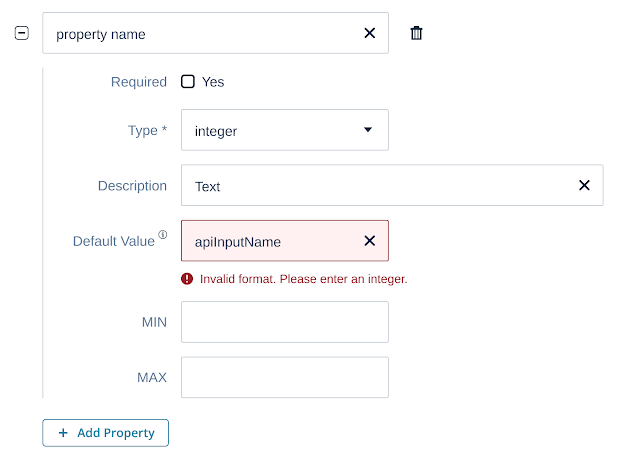UX Sample Work

UX - Command Definition In Console
Company: Ford
Teams: PXP team
Duration: 2 months
Target devices: desktop
Role: Design and project management
What are commands?
TMC commands are secure messages delivered to a vehicle, allowing it to perform specific actions and support various user workflows, such as:
- Authorization
- Fordpass
- EV battery preconditioning
- Provisioning
- Customer Connectivity Settings
- Stolen Vehicle Services
- Start OTA installation
Key point for the TMC platform is the bidirectional nature, not just telemetry from the vehicle, but the ability to remotely configure vehicles/devices with confirmation
How to Send a Command to a Vehicle?
- Identify FTCP Command
- Register a command type and device type
- Define metadata
- Define property schema
- Define cloud to device conversion rules
- Define device to cloud conversion rules
- Verify the configuration and create a sample request
- Enable the command definition
- Test the command definition
- Publish a validated command definition
- Trigger command
Project Objectives
Increase implementation speed
Traditionally, defining a new command required the engineering team to modify the Command API, which could take months.
This project aimed to allow solution engineers or feature teams to create custom command definitions (configurations) directly from the console, dramatically reducing the turnaround time to just a few days.
Reduce complexity
Given the complex nature of command definitions—often involving thousands of lines of code—The users need handheld step-by-step support from the engineering team. The goal is to enable novice users to create valid custom command definitions through the UI with guidance.
Reduce warranty costs
The lack of a self-service interface for defining commands led to frequent misconfigurations and misaligned implementations, resulting in increased software-related warranty costs and extended development cycles.
Challenges and solutions
Varying User Knowledge Levels
Users had different levels of familiarity with command definitions, requiring tailored experiences based on expertise.
Solution:
- Power Users: Provided a JSON editor for direct editing
- Novice Users: Offered a step-by-step form experience with API-supported options and provided templates based on existing command definitions or FTCP messages.
High Risk of Errors
Users could easily create invalid configurations without a solid understanding of command property types, conversion rules, and schemas.
Solution:
- Implemented input validation at each form field
- Added full schema validation before allowing command submission
Lack of Traceability
It was difficult to identify the creator of an existing command definition or understand the reasoning behind certain configurations.
Solution:
Introduced a "Point of Contact" field as part of the command definition metadata.
Reduce warranty costs
The misconfigured command could affect over 40 million connected vehicles.
Solution:
By introducing validation, guidance, and clear configuration guardrails, the tool empowers users to define commands accurately and independently, reducing reliance on engineering teams, improving development efficiency, and enhancing vehicle reliability and customer satisfaction.
Steps:
Planning
- Define the overall purpose and desired outcome of the project
- Conduct stakeholder interviews and gather context and history
- Ensure the outcome of the project aligns with the organization's strategic objectives
- Define project priority and scope
UserJourney & Wireframes
- Align on the shared and collaborative vision
- Identify and address potential design flaws and usability issues
- >Discuss technical feasibility
- Define a development schedule
- Collect early user feedback

High-Fidelity Mockups & Prototype
- Showcase design - Provides pixel-perfect UI
- Realistic data representation
- Showcase the functionality - Clickable prototype to test the user experience and interactions before development
- Final step to collect feedback from internal and external users and iterate before handing over the design to developers
- Visual guidelines that the developers follow while developing the UI
Validation and Iteration
- Monitor API and UI development
- Validate the development and provide feedback
- Iterate design based on real-world constraints
Outcomes:
Short Turnaround Time
Command implementation time went down from months to days
>Enhance Self-Serve Experience
Feature teams and solution engineers can create a command definition (configuration) directly from the console and validate the configuration.
Reduced number of support tickets
Support tickets related to command definitions were reduced by 40%, showing a continued downward trend.
Design Mockups
Design 1 - Command definition list page with a create command definition button at the primary location
Design 2 - Command definition forms grouped by logical sections
Design 3 - Auto-generation feature
Design 4 - Guided forms for novice users
Design 6 - Configuration Validation
Outcomes:
Short Turnaround Time
Command implementation time went down from months to days
Enhance the self-serve experience
Feature teams and solution engineers can create a command definition (configuration) directly from the console and validate the configuration.
Reduced Support Tickets
Support tickets related to command definitions were reduced by 40%, showing a continued downward trend.









